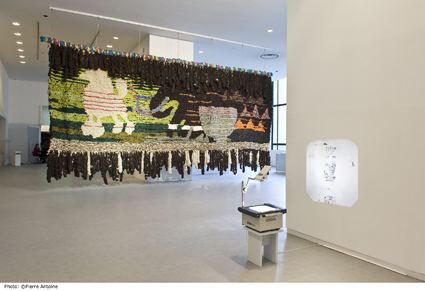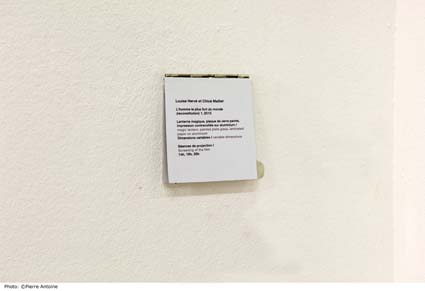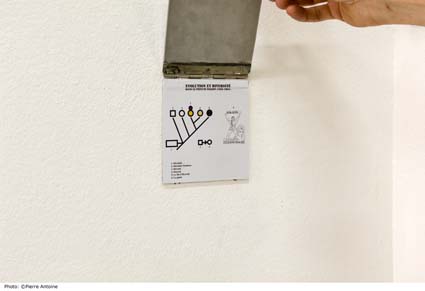International Institute for Important Items
Louise Hervé & Clovis Maillet




Installation and screening, «Dynasty» exhibition, Palais de Tokyo, Musée d’Art Moderne, June-September 2010
Excerpt from «Muscle and light», Palais/Magazine n°12, 2010, p. 108-111
«The character of Maciste came into being in Gabriele d’Annunzio’s script for Cabiria (1913), the first blockbuster in the history of cinema. But the actor Bartolomeo Pagano would repeat the role in the widest variety of contexts, a film made right in the middle of World War I even having him don the uniform of an alpine chasseur fighting against Austrian troops! And when directors resuscitated the character in the early 1960s, he also traveled in space (from pharaonic Egypt to Mongolia, by way of imaginary countries) and time (from prehistory to the Middle Ages, or even a long way into the Renaissance). Moreover, a marvelous synthesis of myth is offered by Riccardo Freda’s Maciste in Hell (Italian title: Maciste all’ inferno), a specious remake of the silent film of the same name, starting in 17th-century Scotland before descending into limbo, which is rather reminiscent of Antiquity in its iconography. What’s more, even the protagonist’s civil status undergoes some mutations: Maciste e la regina di Samar was released in the United States under the title Hercules Against The Moon Men, while Ercole contro il gigante Golia would remain famous for a French version (Maciste vengeur du dieu maya) where the first sentence the hero utters is “Je m’appelle Hercule” (sic).»
Installation et projection, Exposition «Dynasty», Palais de Tokyo, Musée d’Art Moderne de la ville de Paris, juin-septembre 2010
Extrait de Gilles Esposito, «Le muscle et la lumière», Palais/Magazine, 2010, p. 108-111
«Le personnage de Maciste naît sous la plume de Gabriele d’Annunzio dans Cabiria (1913), première superproduction de l’histoire du cinéma. Mais l’acteur Bartolomeo Pagano reprendra le rôle dans les contextes les plus divers, une bande tournée en pleine Première Guerre Mondiale lui faisant même endosser l’uniforme d’un chasseur alpin combattant les troupes autrichiennes ! Et quand les réalisateurs ressuscitent le personnage au début des années 60, il voyage également dans l’espace (de l’Egypte pharaonique à la Mongolie, en passant par des contrées imaginaires) et le temps (de la préhistoire au Moyen-âge, voire très loin dans la Renaissance). Une merveilleuse synthèse du mythe est d’ailleurs proposée par le Maciste en Enfer de Riccardo Freda, faux remake du film muet homonyme, débutant dans l’Ecosse du 17e siècle avant de descendre dans des limbes dont l’iconographie rappelle plutôt l’Antiquité. En outre, il n’y a pas jusqu’à l’état-civil du protagoniste qui ne subisse certaines mutations : Maciste contre les hommes de pierre (Maciste e la regina di Samar) sortira aux Etats-Unis sous le titre Hercules Against The Moon Men, tandis que Maciste vengeur du dieu maya (Ercole contro il gigante Golia) restera célèbre par une VF où la première phrase prononcée par le héros est « Je m’appelle Hercule » (sic).»